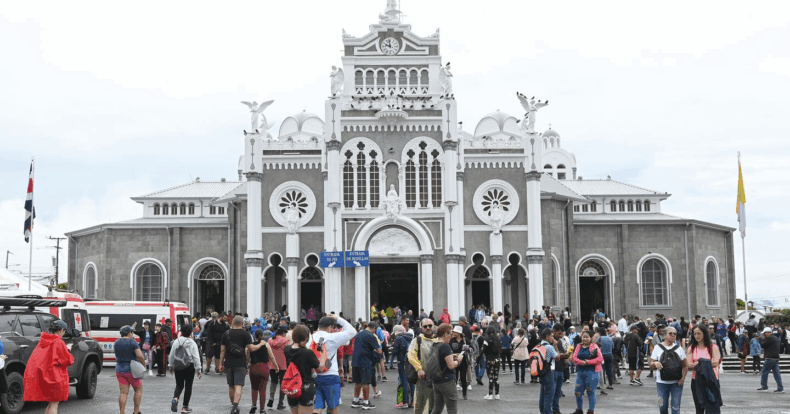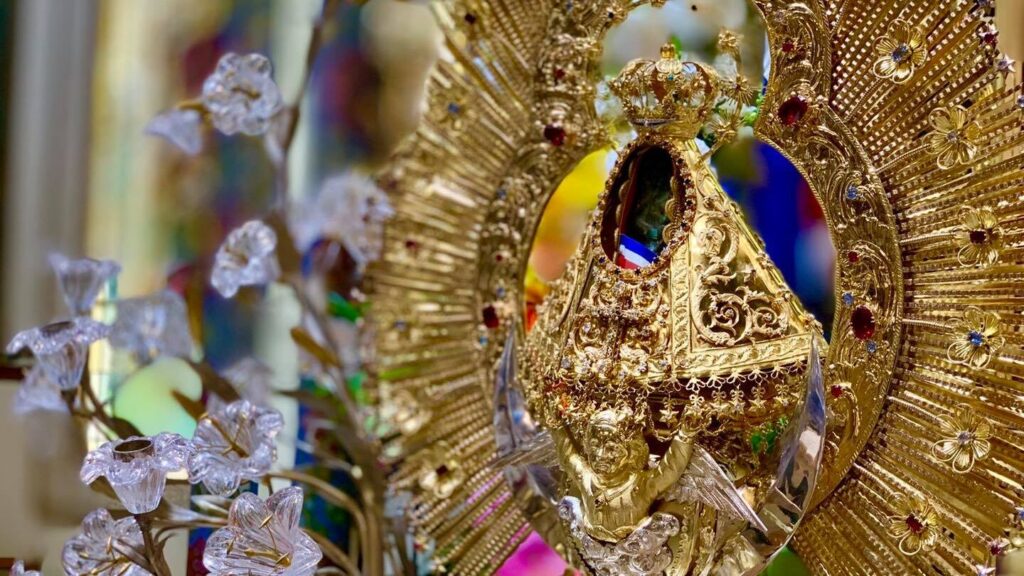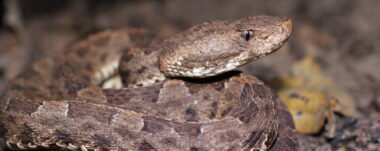August 2: Day of the Virgin of Los Angeles

Every August 2, Costa Rica celebrates with deep devotion the Day of the Virgin of the Angels, their patron saint. This date has become one of the most important religious commemorations in the country and one of the most significant Marian festivities in Latin America. During this day, the faithful solemnly carry the image of the Virgin to the main altar of the Basilica of Los Ángeles in Cartago, where a solemn mass is celebrated, followed by a massive procession.
Why is it celebrated?
The Government of Costa Rica officially proclaimed the Virgin of the Angels as Patroness of the country on September 24, 1824. Subsequently, Pope John Paul II also declared her Protectress of the Americas, thus recognizing the profound devotion professed to her by the faithful of the continent.
This tradition dates back to 1635, when, according to legend, a young indigenous woman of humble origins named Juana Pereira found a small image of the Virgin Mary carved in dark stone in the forest, with the Baby Jesus in her arms. The discovery took place in a place known as Puebla de los Pardos, in what is now the city of Cartago.
Originally known as the Virgen Morena (Dark Virgin), the image was later named the Virgen de los Pardos (Virgin of the Browns) after the place where it was found, and later the Reina de Cartago (Queen of Carthage). Finally, it was given the name Our Lady of the Angels, as the discovery coincided with August 2, the day on which the Franciscan order celebrates Saint Mary of the Angels.



The image of “La Negrita”
The original image of the Virgin is small and made of volcanic rock, graphite, and jade. Its dark color has earned it the affectionate nickname “La Negrita” among its faithful followers.
According to tradition, people carried the image to different places, but it mysteriously disappeared and reappeared on the rock where Juana Pereira first found it. The faithful interpreted this as the Virgin’s desire to remain in that place. This led to the construction of a hermitage and, over time, the current Basilica of Los Angeles, which became one of the country’s main pilgrimage centers.
The Pilgrimage
The Romería is the annual pilgrimage to the Basilica of Los Angeles that brings together around two million people every year. Although it is a Catholic tradition, it has transcended as a cultural and spiritual event of great national importance.
Pilgrims walk from different parts of the country, with the most common route being from San José to Cartago, a distance of approximately 22 kilometers. However, many devotees begin their journey from even further away, starting their walk several days in advance.
On August 2nd, the esplanade of the Basilica fills with faithful who attend a solemn mass presided over by the Archbishop of the Diocese, accompanied by priests, ministers, and national authorities, including the President of the Republic.
August 2: a faith that walks
For many Costa Ricans, the Romería is an expression of gratitude, faith, and hope. Some walk as part of a promise, others to give thanks for a miracle, and many to pray for the health or well-being of a loved one.
One of the most moving practices occurs when the faithful crawl on their knees from the entrance of the temple to the main altar as an act of penance or gratitude. Visitors can also see the “stone of discovery” and collect water from the sanctuary’s “holy spring,” which is believed to have healing and spiritual properties.
Sensorial Sunsets
Navigate articles





